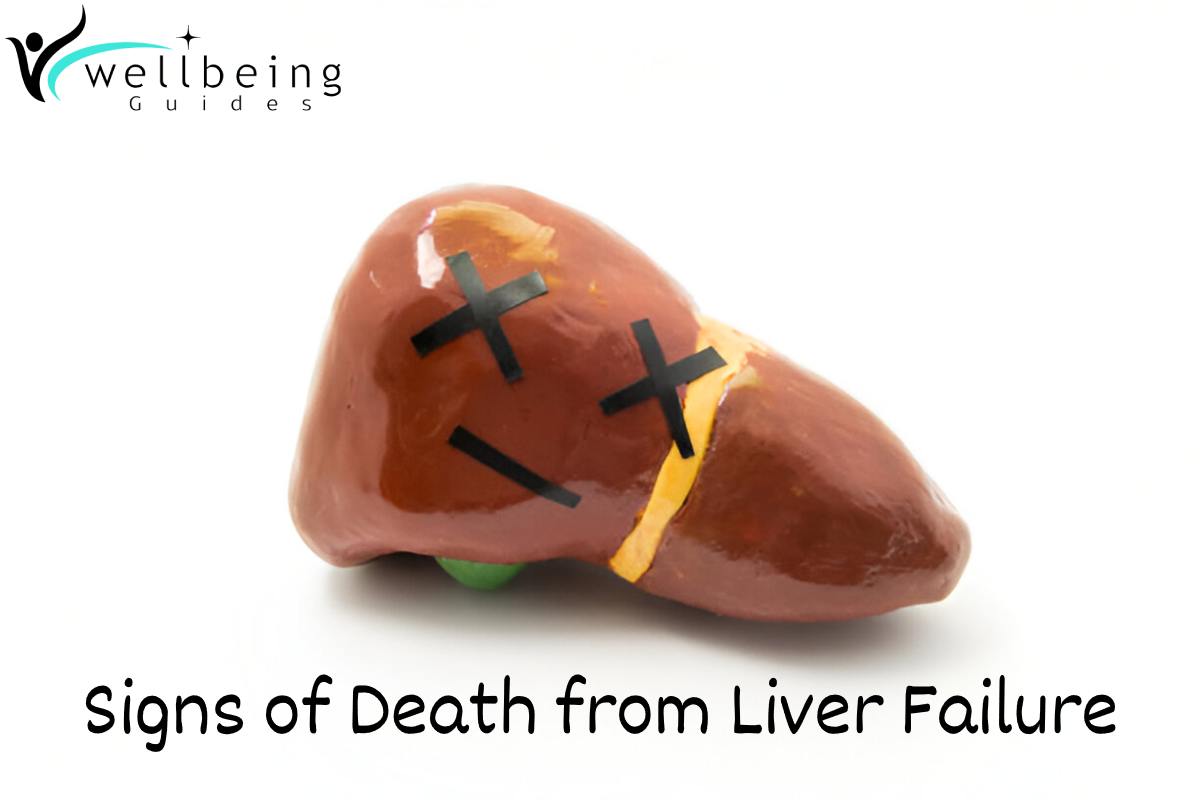Signs of Death from Liver Failure – End stage liver disease (ESLD), also known as the final stage liver failure, is an irreversible liver condition that occurs due to acute liver failure or chronic liver diseases resulting in disruption of hepatic parenchyma (liver cells) and the adjacent structures (hepatic blood vessels and the bile ducts). It is a culmination of chronic liver disease that progresses to cirrhosis, decompensation, and chronic liver failure, which might lead to portal hypertension or complications related to hepatic failure.
The end stage liver disease is characterised by the presence of (any) chronic liver failure, decompensated cirrhosis (scar tissue replaces damaged tissue in the liver), and stage 4 hepatitis. Patients with end stage liver disease usually have either decompensated or compensated cirrhosis.
Decompensated liver disease: Cirrhotic patients under this category have an acute deterioration in liver function characterised by severe symptoms and complications that increase the risk of mortality.
Compensated liver disease: Patients are often asymptomatic or have few symptoms, though the patient has progressed to cirrhosis (the last stage of liver failure). Some patients with compensated liver disease can develop hepatocellular cancer.
Pediatric End-Stage Liver Disease (PELD)
Pediatric end-stage liver disease (PELD) raises unique management challenges for paediatricians, as the complications associated with pediatric end stage liver disease are portal hypertension, encephalopathy, spontaneous bacterial peritonitis and ascites. The causes and natural history of ESLD in children vary depending on the age of presentation. Children are particularly prone to malnutrition, developmental delays, and fragility. Nutritional support plays a crucial role in the management of ESLD as it significantly impacts the clinical course and survival before and after liver transplantation.
End Stage Liver Disease Causes
The cause of end stage liver disease (ESLD) is primarily liver cirrhosis (formation of scar tissue throughout the liver). The leading causes for liver cirrhosis are due to the presence of the following conditions, such as:
- Alcohol-related liver disease (ARLD)
- Non-alcoholic fatty liver disease (NAFLD)
- Viral hepatitis
- Primary sclerosing cholangitis (PSC)
- Autoimmune hepatitis
- Lysosomal storage diseases
- Cardiovascular disease
- Primary hepatocellular carcinoma
- Primary biliary cholangitis
- Certain classes of medications
End Stage Liver Disease Symptoms
The signs and symptoms of end stage liver disease are numerous, especially in the terminal phase of a patient’s life. The following are some of the symptoms of ESLD such as:
- Peripheral oedema
- Dyspnoea (shortness of breath)
- Yellowish discoloration of the skin and sclera (jaundice)
- Disorientation and memory loss
- Vomiting sensation
- Muscle cramps
- Loss of hunger
- Insomnia (trouble falling asleep)
- Depression and anxiety
- Impaired brain functions
- Pruritus (itching)
Complications of End Stage Liver Disease (ESLD)
The end stage liver disease complications do have recognisable symptoms, including:
- Ascites
- Hepatic encephalopathy
- Oesophageal Varices
- Infections
- Kidney failure
- Bruising and bleeding
- Portal hypertension
- Splenomegaly
- Jaundice
- Gallstones
- Liver cancer
- Insulin resistance and type 2 diabetes
- Sensitivity to medications
Ascites:
Fluid accumulation of the abdomen is a serious complication of liver disease that can lead to bloating, pain in the abdomen, abdominal swelling, and shortness of breath. Research reports show patients with liver disease and ascites die within 24 months.
Hepatic encephalopathy:
Hepatic encephalopathy (HE) occurs when the brain’s ability to function is hampered by the accumulation of toxins in the bloodstream. Patients with hepatic encephalopathy can survive for one year. The risk of HE increases as the patient’s condition (end stage liver disease) deteriorates.
Oesophageal varices:
Oesophageal varices are dilated veins that arise when liver scar tissue restricts blood supply to the digestive tract. The oesophageal veins enlarge as the blood backs up. Varices can bleed and rupture without medical intervention, which is potentially fatal. The symptoms include hematemesis (blood vomiting), black and tarry stools, or lightheadedness.
Infections:
End stage liver disease can lead to spontaneous bacterial peritonitis or pneumonia, which are also complications for ascites.
Kidney failure:
10% of the patients with liver failure may also develop kidney failure. Although kidney function is significantly hampered, the kidneys are unharmed. The exact cause for this complication is idiopathic (unknown); however, some researchers opine it might be due to blood pressure and blood flow variations.
Bruising and bleeding:
In end stage liver disease, the liver’s production of blood-clotting proteins is reduced, resulting in bruising and bleeding easily.
Portal hypertension:
The portal vein is responsible for transporting blood from the digestive tract, pancreas and spleen to the liver. The congestion of the blood flow and augmented hepatic vascular resistance caused by chronic end stage liver disease result in elevated portal venous pressure (portal hypertension).
Splenomegaly:
Due to portal hypertension, white blood cells and platelets are held in the enlarged spleen, resulting in a lower blood count. Cirrhosis, in some cases, might first be detected by a drop in platelet count.
Gallstones:
The liver’s cirrhotic stage prevents bile’s free flow, and the accumulation of bile hardens, resulting in the formation of gallstones.
Liver cancer:
Hepatocellular carcinoma (HCC) develops in cirrhosis when cells in the damaged liver begin to proliferate uncontrollably.
Insulin resistance and type 2 diabetes:
Insulin resistance is a consequence of cirrhosis; insulin (a hormone secreted by the pancreas) aids the human body to utilise glucose for energy production. In the case of insulin resistance, the body’s fat, muscle and liver cells fail to respond normally to insulin. Despite the pancreas’ best efforts in releasing insulin, glucose levels in the blood continue to rise, leading to type 2 diabetes.
Sensitivity to medications:
Liver cirrhosis disables the liver function of filtering medications from the blood, resulting in longer actions of medications and their accumulation in the body. This results in increased medication sensitivity.


